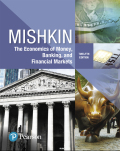
To explain: Whether before the National Bank Act of 1863 the prevailing conditions in the banking industry fostered or hindered the trade across the states in Country US.
Explanation of Solution
Before the National Bank Act of 1863, the conditions in the banking industry hindered the trade across the states in Country US. This can be said for the reasons as follows:
Before this act, the commercial banks in Country US were regulated by the banking commission of the states in which the banks were operational. There was no national currency which created problems in the regulation of trade. At that time banks have to obtain funds by issuing banknotes mainly. As the regulations of banking were very loose in many states, it was not easy to manage the trades across states. The banks reported many cases of fraud and insufficient bank funds so the banks failed many times and also the banknotes were not worthy then. So, it was difficult to manage the trade across the states.
The banking system in Country US before the National Bank Act of 1863 was regulated by the banking commission of states, which created many problems in the trading system of Country US.
As to manage trade across different states, it is necessary that the regulation of currency and trade should be uniform across the states. Before the National Bank Act of 1863, as there was no national currency and also the regulations of banking varied from state to state, it created a hindrance in the trades across states. The trade situations were not very easy and the development of trade was difficult. After the enactment of the National Bank Act 1863, a national banking system was made, and a national currency was established. This act was made to cover all the financial problems which were created after the federal war and to create uniformity for the trade situations.
Introduction: The National Bank Act of 1863 was enacted to create a system of banking which is for the whole nation, which was ready to float the loans which were made in the Federal war and to establish a national currency. This act was passed to bring financial stability and to solve the financial crisis.
The banking industry in Country US is controlled by the Comptroller of the Currency. After the revolutionary war, the new banking act was made to have uniformity in banking.
Want to see more full solutions like this?
Chapter 11 Solutions
EBK ECONOMICS OF MONEY, BANKING AND FIN
- everything is in photo (19)arrow_forwardIn announcing tariffs on imported steel and aluminum last week, the President said he was imposing a tax on foreign manufacturers who seek to export to the U.S. Is that a fair description of what he did and who will pay? Explain your answer.arrow_forwardAnticipating a severe winter storm, stores stock up on snow shovels and consumers buy snow shovels to be able to clear access to their property. What happens to the price and quantity of snow shovels in the days leading up to the stormarrow_forward
- In the context of supply and demand, describe what equilibrium means? Can a shortage or surplus exist in a market that is left to its own devices? Explain.arrow_forwardTypically, spending in an economy is divided into four components. What are they? Which is the largest component? Which is the most steady from one period to another? Which is most volatile from one period to another? Explain why for your two previous answers.arrow_forwardMichelle Wie, a teenage golf prodigy, earned $16 million from endorsements and $4 million in prize money in 2006. In 2007, she announced that she would enroll in Stanford University for the Fall term. What was her opportunity cost for the 2007-2008 academic year? How does it compare to your opportunity cost of a year at University?arrow_forward

 Principles of Economics (12th Edition)EconomicsISBN:9780134078779Author:Karl E. Case, Ray C. Fair, Sharon E. OsterPublisher:PEARSON
Principles of Economics (12th Edition)EconomicsISBN:9780134078779Author:Karl E. Case, Ray C. Fair, Sharon E. OsterPublisher:PEARSON Engineering Economy (17th Edition)EconomicsISBN:9780134870069Author:William G. Sullivan, Elin M. Wicks, C. Patrick KoellingPublisher:PEARSON
Engineering Economy (17th Edition)EconomicsISBN:9780134870069Author:William G. Sullivan, Elin M. Wicks, C. Patrick KoellingPublisher:PEARSON Principles of Economics (MindTap Course List)EconomicsISBN:9781305585126Author:N. Gregory MankiwPublisher:Cengage Learning
Principles of Economics (MindTap Course List)EconomicsISBN:9781305585126Author:N. Gregory MankiwPublisher:Cengage Learning Managerial Economics: A Problem Solving ApproachEconomicsISBN:9781337106665Author:Luke M. Froeb, Brian T. McCann, Michael R. Ward, Mike ShorPublisher:Cengage Learning
Managerial Economics: A Problem Solving ApproachEconomicsISBN:9781337106665Author:Luke M. Froeb, Brian T. McCann, Michael R. Ward, Mike ShorPublisher:Cengage Learning Managerial Economics & Business Strategy (Mcgraw-...EconomicsISBN:9781259290619Author:Michael Baye, Jeff PrincePublisher:McGraw-Hill Education
Managerial Economics & Business Strategy (Mcgraw-...EconomicsISBN:9781259290619Author:Michael Baye, Jeff PrincePublisher:McGraw-Hill Education





